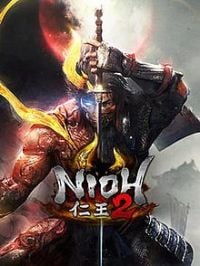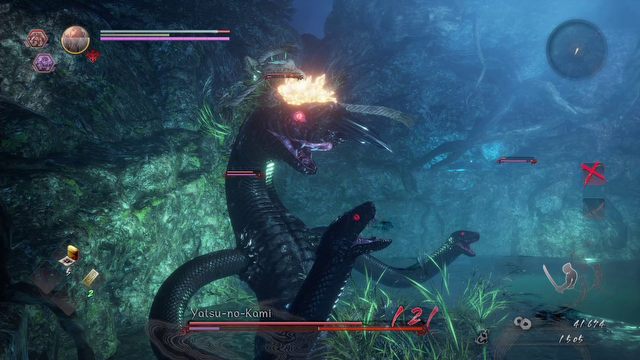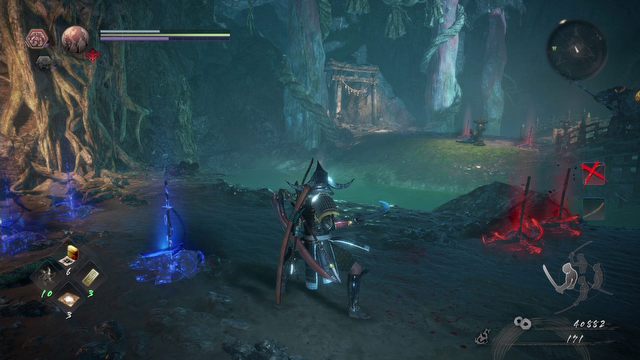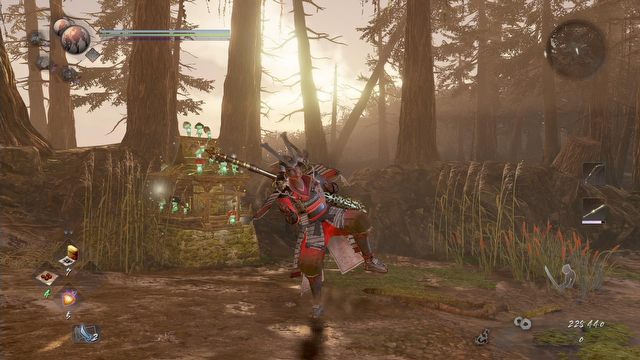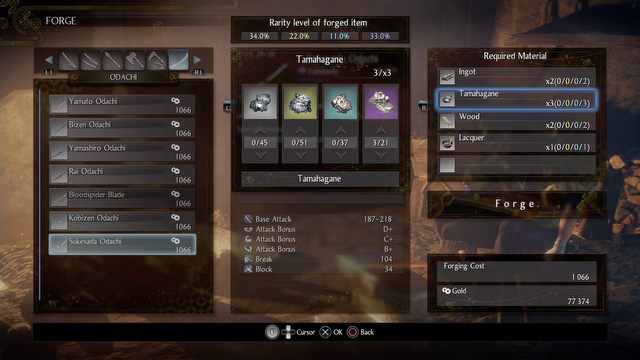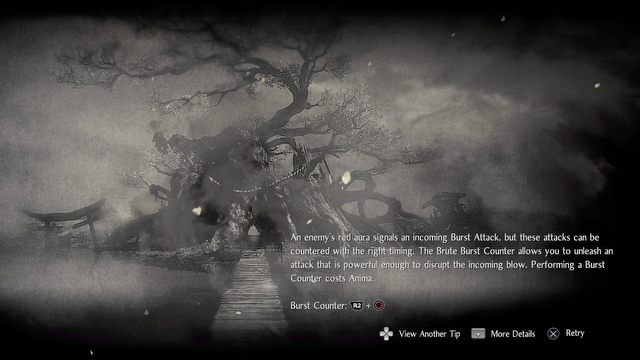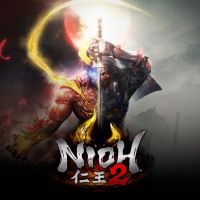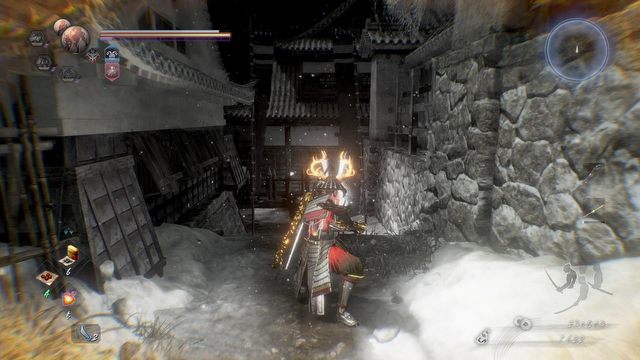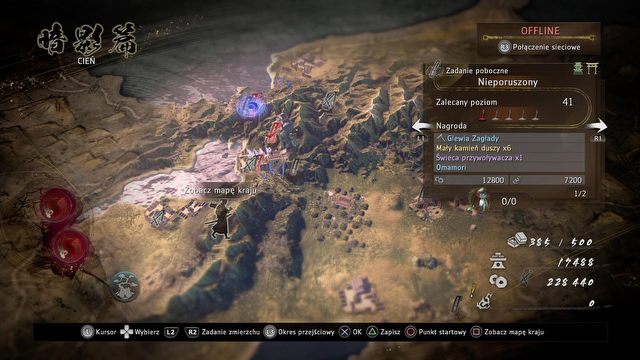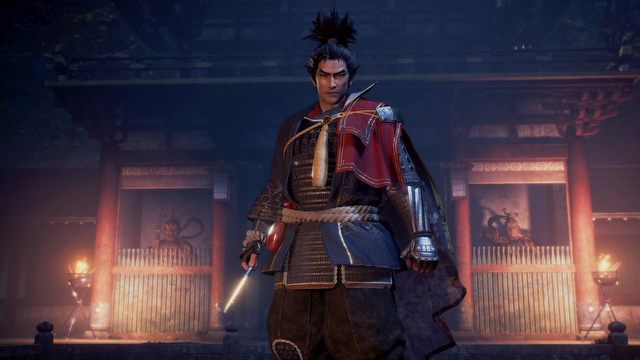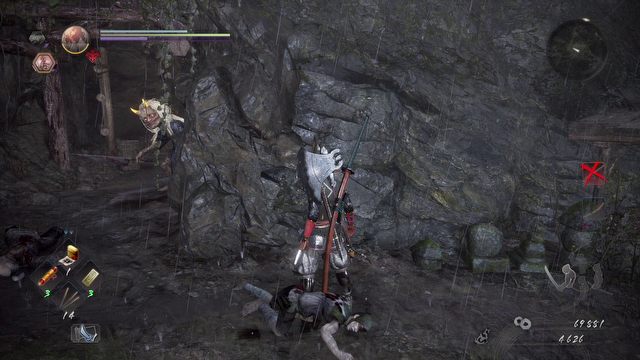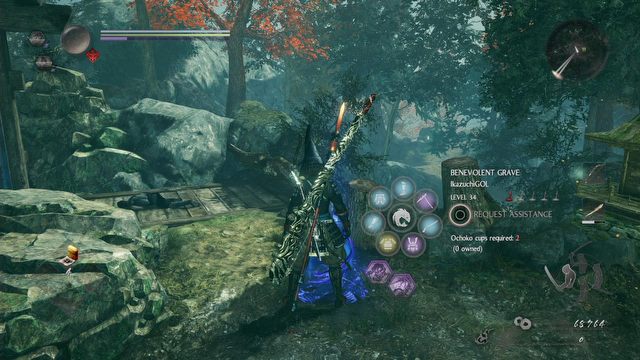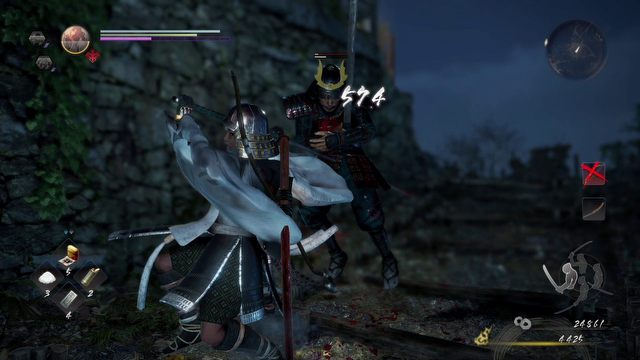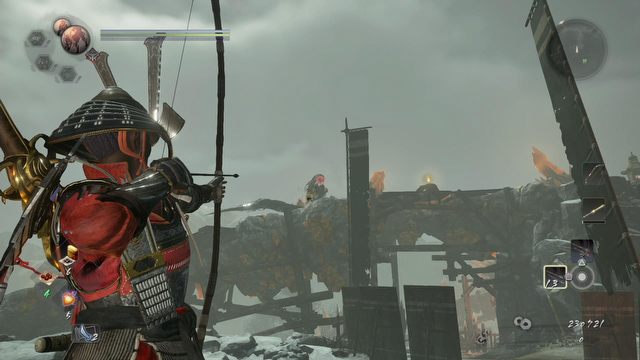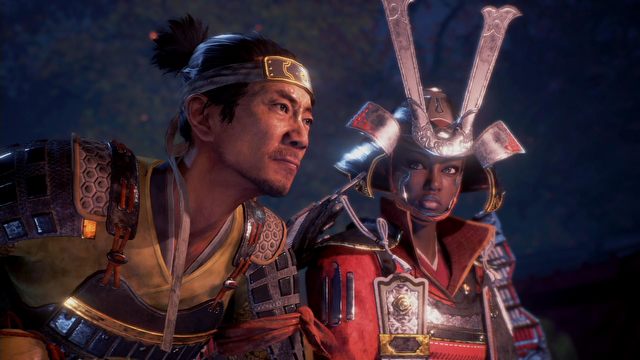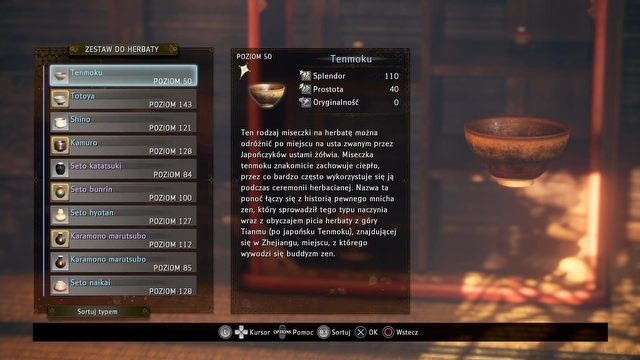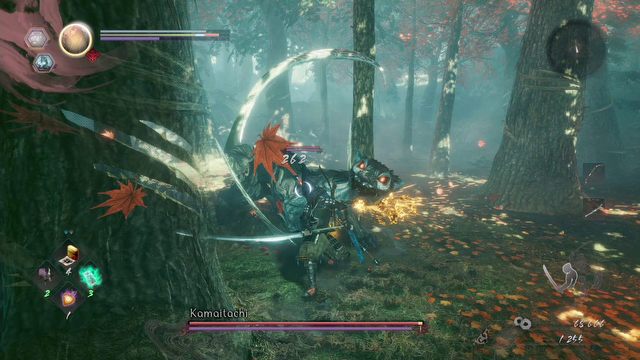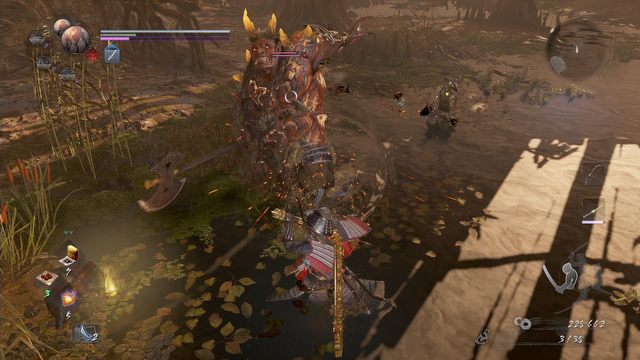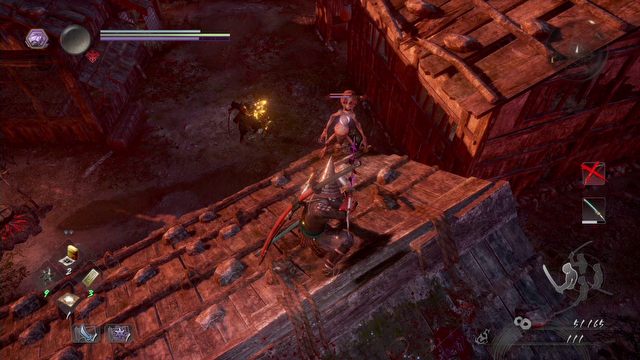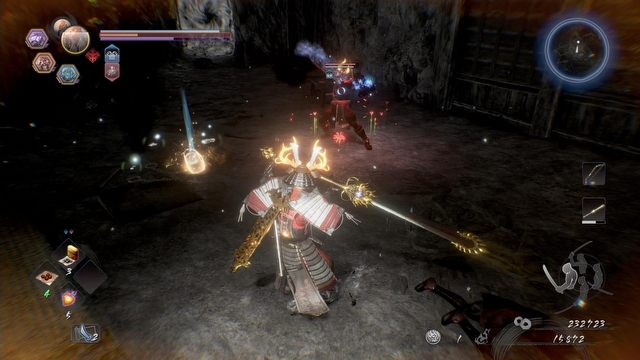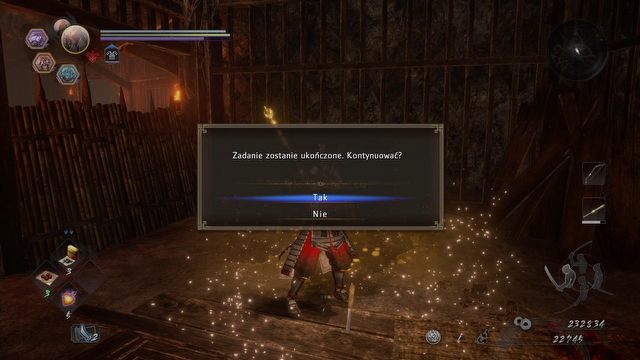Nioh 2 Review – Make Me Wanna Die 1000 Times
When I started writing this review, I was tempted to follow Team Ninja's example and just copy whole paragraphs from the first game text, change headlines and add a few small changes. Fun fact: that review would mostly be accurate and relevant.
The review is based on the PS4 version.

- evolution of the complex combat system
- great design of new opponents
- similar game size – a lot of content
- quality-of-life improvements, such as saving the character configuration
- more appealing visuals
- disappointing big bosses
- clinging to the schemes too much
- side quests are still not compelling
When I started writing this review, I felt tempted to follow the example of Team Ninja and just copy entire paragraphs from the review of the original, change the headings, and add a couple of small changes. Yes, Nioh 2 is a calque. The visuals are similar, the design and atmosphere are virtually the same. Similarly, to the first game, this one favors quantity over quality, throws tons of random-stat weapons at you, offers insubstantial side activities, and some insignificant mechanics, such as sorting out tableware on a shelf. If you performed a blind test of showing people screens from both games at random, few players would be able to tell them apart.
It may sound like a small disaster, but it actually isn't. Nioh 2, despite the lack of innovation and bold solutions, is just as riveting, and has just as much soul. The small changes that were made bring an additional tactical level to combat, while also introducing a pinch of chaos. Team Ninja responsibly follows the ancient Oriental philosophy, which says that if you have a good game on your hands, you need to strive not to spoil it.
What happened to the "Japanese Witcher?"
One of the first things to notice about Nioh 2 is that we get a new main character, William, sometimes called the "Japanese Geralt." Nioh 2 is a prequel, and it introduces a new protagonist – an unnamed warrior whose mother was killed by a mysterious man with a staff (by the way, we can now create our own character in the editor). This samurai holds a secret as a carrier the yokai blood, blood of demons that people hunt down. We quickly join forces with Mumyo, the leader of sohayo, a faction focused on hunting demons, and Tokichiro, an ambitious mercenary and traveler who is looking for soul stones that give power. The ending is predictable not only because it's a prequel, but also because similar stories have been told many times. The mineral, of course, guarantees power, but not for free. The price is the loss of one's own humanity and the descent into blind greed. This is a hackneyed trope, but it works quite well in the context of such a game, especially since everything is beautifully served, neatly tied together with references to the first part of the series.
The game seems to feel comfortable as a sequel, showing the origins of famous characters, and introducing new persons. As the original, Nioh 2 reinforces the narrative with historical events and figures from the Azuchi-Momoyama period. For most of the campaign, we follow Ode Nobunaga's attempts to unite the country (he was one of the great Japanese leaders, who appeared in many other games, such as Samurai Warrior series, or Nobunaga's Ambition, a strategy). The history of his reign is full of glorious victories on the battlefield, and proliferation of culture, but also behind-the-scenes schemes and intrigues, including the betrayal that led to his death.
I honestly admit that these historical touches in Nioh are really great, especially since they have been recreated with high fidelity. The demons that serve as the background of the story are just a symbolic representation of the human fallacies, yielding to the temptations of power. Only that here, the demons are real, and you need to pierce them with pointy things.
The protagonist, grappling with their inner demons, fades a little among all those historical characters fighting for good or evil. The voiceless hero can only watch and try to understand. But I don't see this as a big disadvantage, because, after all, our contribution to the narrative comes down to swinging the sword, rather than discuss philosophy. What I really liked about it all was the short notes on the demons and the historical figures.
Of course, it will be hard to appreciate this lore without any sort of background knowledge, but you can learn many interesting tidbits about the Japanese beliefs and customs. The hero's hut, for example, includes teacups and pots labelled "splendor," "simplicity," or "originality."
AFRICAN SAMURAI
The character editor in Nioh 2 is expanded and provides a lot of freedom. I wanted to go for a character inspired by Michonne from The Walking Dead, a dark-skinned female warrior with a katana. And although this sounds quite absurd in culturally homogeneous Japan, we know from historical reports that it could have been true. During the reign of the above-mentioned Oda Nobunaga, about whom Nioh 2 talks a little, an Italian missionary arrived in Japan with a black warrior hired as bodyguard. Nobunaga, intrigued by his character, was to take him into service. The samurai was named Yasuke and reportedly served the leader until the very end of his days. Besides, if you played the first Nioh, you already crossed swords with him.
This door opens on the other side
When I said that Nioh 2 looks like a calque, I wasn't kidding. Fans of the prototype will immediately feel at home and recognize familiar views. The game is based on maps, on which we trigger the following main and side quests, visit our headquarters to train, or upgrade equipment at the blacksmith. Here, you can also launch more challenging variants of missions, participate in online games, and engage in other side activities.
So, contrary to Dark Souls, this is a much more concrete game, with a list of specific things to get done. And there's a lot to do: completing the entire campaign took me 80 hours – I only spent a few hours playing online, and only completed part of the side activities. The time needed to complete the entire game varies, of course, depending on your skills; some will finish it off in 35 hours, but otherwise, Nioh 2 offers a satisfying amount of content.
The main difference between Nioh and Dark Souls III is the balance of quantity and quality, which in this case is even further down the quantity line. Individual tasks are quite interesting, but always follow a similar pattern. Almost invariably, we begin at a shrine that says, in the unique, souls-like manner "the door is opens from the other side." At some point in the campaign, this just becomes ridiculous, but in the game itself, it does not spoil anything because Team Ninja ends up bending over backwards to keep us interested.
Thus, we get a set of interesting locations, ranging from multi-level castles to more open areas. Exploration is diversified with mechanics such as finding keys to switches that change the shape of the map, but the most important thing, it seems, is the kingdom of darkness. These are areas under complete control of the yokai, and we can clear them off by cutting off the source of evil power (mostly by killing a boss). The enemies here are more powerful, and our character is slower to restore strength, which initially seems very difficult, but it actually was balanced with some mechanics and obtainable skills.
The level design isn't on par with the brilliant designs of From Software, but it also isn't bad in any important way, and generally manages to hold its own. I appreciate the slightly more varied color palette – there's less night and more colors and accents in Nioh 2. And let's be honest: this is not a particularly pretty game, which is most noticeable when you look at the completely abhorrent edges of the maps.
Still, the game offers a huge number of loot and character development options – in one mission, you may find more than a hundred different pieces of armor and weapons. At first, a huge amount of loot can overwhelm, but there's a method in this. It takes just a few clicks to get rid of all the unnecessary garbage, and the sheer number of different weapons and armors opens up many opportunities to customize the character. In addition, each piece of equipment, also auxiliary accessories, can be adapted to our needs by increasing its level at the expense of other pieces of equipment, literally "burning" new properties into the item (within the mechanics added in the DLC to the first Nioh); it's also possible to change the appearance of items. All the possibilities in character development and equipment customization are quite engaging, and I've spent a lot of time playing with that.
When it comes to scoring levels, the game didn't need any improvements. Here, the system is identical as in the first game – we increase our stats by killing enemies, and get new abilities by using specific weapons and techniques. The ability trees can be overwhelming at the beginning, and understanding what can be useful isn't easy at first. The first Nioh introduced many interesting tactical possibilities, and things are similar here. Trying them all out, however, would require a lot more time than I had with the game. However, as always, Team Ninja offers options for resetting spent points, so creating different builds in one playthrough shouldn't be a problem.
AUXILIARY SPIRITS
The assistants that you can run into make a comeback in the prequel. These are mostly spirits of trees called the kodama, hidden in different nooks of the world. Finding them is very profitable because they offer blessings. Beyond that, we can also find sudam and some bizarre cats. The former are a "corrupt" version of kodama, and they love to exchange items. The latter join the player for a brief time, offering pleasant purring effects and combat support. There are also some healing springs.
The most effective snake attack
The single most important element of a game like Nioh is, of course, the combat system. In the first part of the series, it was quite excellent, offering an interesting combination of several elements: different types of weapons with specific attacks, systems of combat stances that could be easily switched, and special attacks. Added to this is a unique idea of a "Ki impulse" that allows you to quickly replenish your character's stamina. This technique can remove the "yokai puddles" created by demons that negatively affect the hero. In the game, you can also utilize the rich arsenal of ninjas, which includes shurikens, containers with poison, onmyo magic, providing access to talismans that strengthen the hero or weaken enemies.
Nioh 2 leaves all these pieces in their place, offering only minor improvements, and thus remaining an exciting action game that's all about feeling the rhythm of the attack, improvising, and inventing new tactics to counter the enemy's changing behavior. There was no need to change anything to make everything work – and here, of course, I applaud the decision to not fix something that's not broken.
If you played the first game, you'll instantly feel at home. So, let's talk about what's new. The Japanese studio has taken a very specific approach that probably won't appeal to everyone. Instead of expanding the samurai arsenal, the devs focused on the demonic attacks. So, while we only get two new types of weapons: axes and glaives, which resemble weapons from Bloodborne, and a few new skills for the remaining weapons. Not much, but then we have the so-called active skills, which we unlock from trees dedicated to each type of weapon. These abilities can be paired with certain attacks to enhance their power, for example you can add poison damage or a bonus based on the character's specific stats.
Real changes in the gameplay are brought with the yokai abilities, which we collect, as in Castlevania or Bloodstained, in the form of cores dropped by enemies. These attacks are substantially different from each other and mimic the behavior of demons in battle. The more extreme abilities include summoning a giant serpent, turning into a flaming spool, or even fart at the enemies. There's also a counterattack that allows you to block a special attack of the enemy marked in red.
So, you can say Nioh 2 is a similar game, but with an extensive set of tactical features that fans of creating wacky builds will surely appreciate. Many facilities have been prepared for them, such as the ability to save settings of hardware or characters. The only real problem is to balance it all. I admit that there are some elements of extracurricular chaos here. For example, the effectiveness of the above-mentioned yokai attacks is really inconsistent, which makes some of them very versatile and able to save the day, while others work exclusively in very specific situations. One particular snake attack received at the beginning of the game accompanied me to the very end, despite being at a rather low level compared to later skills. The other attack, much more powerful according to the description, turned out comically weak. Of course, you can always make a point of not using the demonic abilities, but this is probably not the best idea. I have a feeling that when developing this new aspect of gameplay, the creators did not fully control it, but perhaps such is the power of yokai that even the designer falls into stupor.
SAMURAI ONLINE
Nioh 2 includes an additional online mode with several additions. First of all, we can call two players to help, or join another player (the game allows you to create your own games and invite friends). Among the online features, it is also worth mentioning the clan wars – in which you can win bonuses to statistics – and the graves left by fallen players. By activating such a grave, we will summon the spirit of a particular player that we can fight with. In offline mode, we will find several similar graves in the game, prepared by the developers. When playing offline, we can also summon one NPC to help us before each boss fight. I didn't see any PvP mode – that was added to the first Nioh in one of the DLCs.
Yokai for A+
Remembering the first Nioh, it's hard not to get the impression that the game was developed on a shoestring budget. This was noticeable especially in the design of enemies, who came in just a few varieties. Halfway through the game, you could feel the developers have used up their ideas, and are just throwing hordes of enemies at the player. To be honest, it's quite similar here – at some point, I felt there are no more truly new enemies, just modified versions of those I already saw.
The important thing, however, is that the new iterations are really dangerous, and the occasional unique enemies that weren't in the first Nioh at all are really incredible. Already the easiest opponent, gaki, deserves his own article. This disfigured creature unassumingly walks about the player, just to hurl itself at us, showing teeth and trying to bite. When attacked, it leaps back, vomiting acidic substance. Wonderful and annoying. There are also mice monks who secrete poisonous gas, parasitic Rokurokubi, familiar from a DLC to the first game, and my favorite Ubume – women holding soul stones like babies; when attacked, they let out a powerful shriek. Meeting these opponents and discovering their properties is a nice experience – it's a pity that the second part of the campaign loses a lot of this momentum.
For many people, these games have only one goal: fighting bosses. Nioh, of course, tries different things in this regard, and it doesn't always succeed. I'll tell you right away what I didn't like: the fights with the big opponents that gave me flashbacks of the worst moments of older God of War games. In one encounter, the challenge is literally to attack the hands of a giant demon that doesn't pose much of a threat. There's also the comical to fight with a demonic beetle the size of a football field – you just stand underneath and easily lay into the ponderous creature.
After Monster Hunter World, such fights seem uncultured. Fortunately, the repertoire of the opponents with more human form is already quite interesting. We have an improved version of the Flexile Sentry from Dark Souls II, which is a combination of two bodies, each with a different set of moves. There's a catwoman on a burning chariot. There is a giant owl. Or a demonic ferret that swings its tail and knocks down trees. I can honestly say that such creatures are always welcome, although most of all, I loved the swordplay and duels with enemies that really gave exposure to the available techniques. In this respect, Nioh 2 is a little underwhelming, especially after the brutal Sekiro, but I was still satisfied – it's a decent set of bosses considering how many we've already seen in souls-like games.
ENDGAME?
The first Nioh had a fairly simple, yet quite extensive new game+ mode, in which we could go through the entire game again at higher levels of difficulty. Nioh 2 uses an identical solution, which means that after completing the epilogue, we can continue the game, scoring new levels and collecting even better equipment. Team Ninja hasn't officially announced any DLC plans, but we assume the game will be expanded.
Difficult?
But exactly how difficult? I would put it like this: Nioh 2 is a game that gets you killed a lot, but I wouldn't call it very difficult (at least not in the main campaign). Almost every opponent can kill us with a single combo or special attack. Some bosses are superhumanly fast and cruel. But all in all, when completing the whole game, I only encountered two bosses that posed more significant problems – a serpent-like creature with snakes instead of arms, and the final boss, especially when he entered the form that wreaked complete havoc on the entire arena. So, the bosses are not as demanding as in Sekiro, but that's partly because Nioh 2 offers much more convenient systems – we can call someone to help, try different weapons or armors, or save ourselves with somewhat OP yokai abilities. Level design offers solid opportunities for sneaking around and surprising enemies, or even bypassing entire "kingdom of darkness" sequences. The difficulty level was satisfactory for my taste – there was plenty of brutal duels, but I didn't feel overwhelmed. Then again, the real Nioh likely beings after 300 hours in the game, but you know, a week is only 168 hours, and I need to sleep sometimes.
Wake up samurai, this is a good sequel
Nioh 2, despite being quite repetitive in many aspects, including mission design and lack of new challenges later in the game, was an overall compelling experience. The game is almost a mirror image of the first installment, yet it still delivers a lot of fun. The locations aren't very distinctive, but their design is quite inventive; on top of that we get dangerous enemies, and a satisfying combat and character development systems, which overall will suffice for many, many hours of play.
Thus, it's safe to say that the Nioh formula has not been exhausted in Nioh 2, and continues to be relevant. I'm also curious what Team Ninja will do with the series after this game, because it's unlikely they'll be able to sell it for the third time with this approach. In the first and second parts, they covered the most stormy and interesting historical period of Japan, after which things mostly calm down. But I feel that the potential sequel won't be just about making tea and sorting out cups on the cupboard.
ABOUT THE AUTHOR
The 80 hours I spent in Nioh 2 went by unnoticed; I feel I can easily pack that much again if I wanted to explore the challenges after completing the campaign.
DISCLAIMER
We received a copy of Nioh 2 for free from the game's publisher. We appreciate it!
NiOh 2
Nioh 2 Review – Make Me Wanna Die 1000 Times
When I started writing this review, I was tempted to follow Team Ninja's example and just copy whole paragraphs from the first game text, change headlines and add a few small changes. Fun fact: that review would mostly be accurate and relevant.
